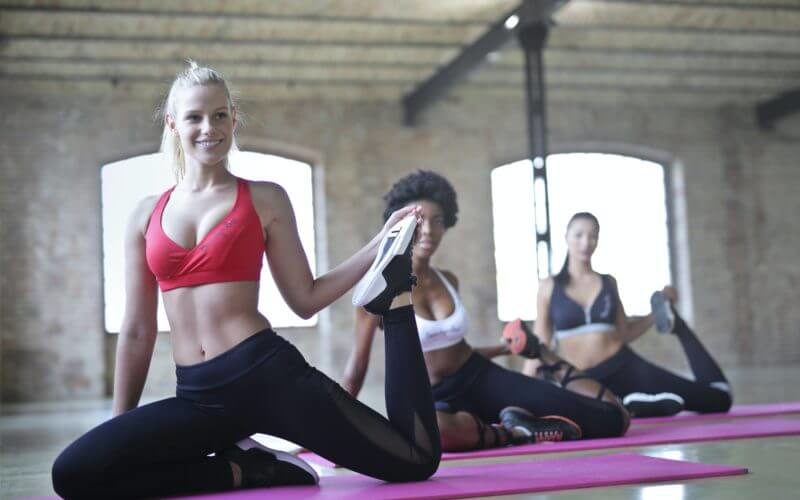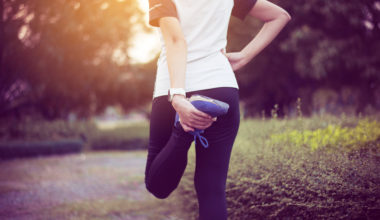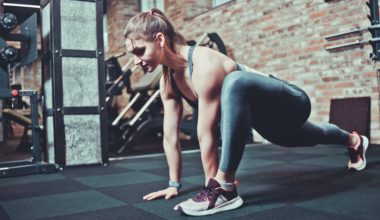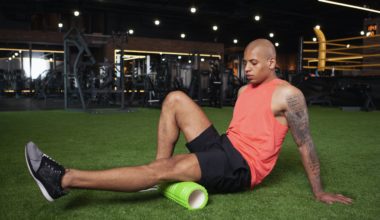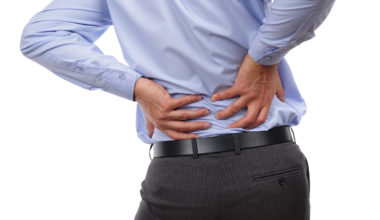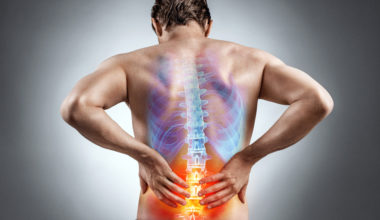We all know the importance of squats in every workout but another exercise that does wonders for your glutes is the hip thrust which is also known as the weighted hip bridge or the weighted glute bridge. All three gluteal muscles are used during this exercise along with the hamstrings, quads, core and hip adductors. This exercise helps build the muscles and also increases strength.
Form
It is quite similar to a glute bridge but works in a different way and requires a bit more making it land at the intermediate level. A hip thrust will target the hamstrings more than a glute bridge.
While this can be done without any equipment, traditionally weights are used. You can use a barbell, weight plates, dumbbells or even kettlebells.
Step-by-Step Instructions
- To do a hip thruster you need to set up with your knees bent and feet flat on the ground, much like in a glute bridge.
- Unlike a glute bridge, a hip thruster requires your back to be elevated. You can use a bench or a box. The bench should not be higher than your knees for safety. One side should be against a wall so that it does not move when you lift.
- The top edge of the bench should hit just below your shoulder blades. If you are not using any weights you can rest your elbows on the bench otherwise your hands will hold the weights in place.
- With your feet shoulder width apart, your toes slightly pointed outwards, core tight, and chin tucked, push your legs upwards until they are parallel with your back and shoulders. Legs should form a 90 degree angle.
- Squeeze your glutes here, then move your hips down until they are two to three inches above the floor.
- Squeeze your glutes again and lift up again. As always exhale during effort and inhale as you release.
- When you are just beginning your weight lifting journey you should do these without any weights. Start with 3 sets of 8 reps. Rest for 30 seconds to a minute between each set. When you can do 8 reps easily move on to 15 and eventually 3 sets of 20 reps.
- Once you can do that easily, challenge yourself by adding a light weight and building up at your own pace.
Common Mistakes
There are a few things to note before you do a perfect hip thrust.
- Make sure your feet stay flat on the floor the entire time.
- The placement of your feet in relation to your body is very important. You want to ensure that they form a perfect right angle when your hips are extended completely upwards. This will mean that you are completing the full range and using the right muscles. You should feel your glutes and hamstrings working more than the front muscles of your thighs.
- Another thing is to make sure that your back remains straight. There is a tendency to arch the lower back and use your ribs to push up. Instead, push up from your feet, keeping your back neutral.
- As with all weight lifting exercises you need to move slowly and not have any jerking movements. Otherwise you are using momentum and gravity to help and your muscles don’t do all the work.
Safety and Precautions
- When you use weights, invest in a barbell pad or use a rolled up yoga mat so that there is some cushion between the weight and your hips.
- Wrist wraps are also a good investment if you are lifting weights regularly. They help stabilize your wrists and keep good form while preventing any injury.
Variations
Basic Glute Bridge
Like we said above, start without weights but if it’s still hard to keep balance then swap it out for a basic glute bridge. In this your entire back, neck and head will be supported on the ground and your legs will be bent as before with feet flat on the ground. Lift up until you resemble a diagonal line from your knees to shoulders. Then lower and repeat. You can add weights to a glute bridge as well by placing a dumbbell horizontally across hips.
One Legged Hip Thrust
If you want to make a hip thrust more challenging try doing it with one leg lifted. This is done without any weights but the rest is the same. Do an entire set and then switch to lifting your other leg.
Inverted Hip Thrust
Another variation is to do a hip thrust but in an inverted position. Your feet should be higher up on a bench or a box and your back will be lower. This will increase the range of motion.
Resistance Band Hip Thrust
The third variation to make it more challenging is to add a resistance band. The band should come around your thighs close to your knees. This would require more work from the muscles on the sides of the hips.
Benefits
There are many benefits of doing hip thrusts apart from the aesthetic aspects.
- The muscles that are developed while doing a hip thrust help us in our everyday life even just walking up several flights of stairs.
- They also help generate power for athletic performance. If you want to improve speed then this exercise will prove more beneficial than lunges, barbell squats or deadlifts.
- Especially for those who find it difficult to do barbell squats they can do this instead.
- Stronger glutes will not just help you do those cool roundhouse kicks but also reduce risk of
- knee pain or low back pain.
Remember to warm up before any strength training and to end with a few minutes of dynamic stretches to avoid injuries and decrease soreness!
